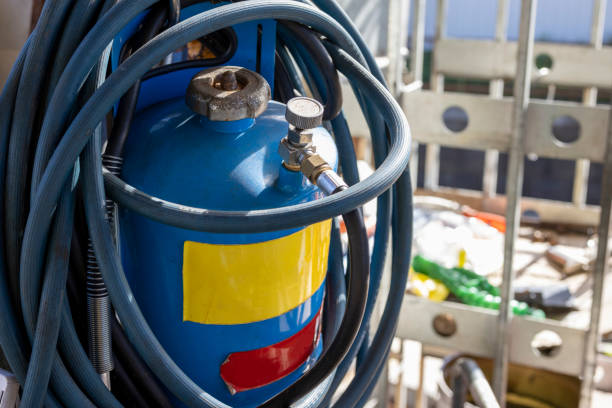Getting a high-quality TIG weld isn't just about skill; it's about understanding the crucial role of shielding gas. The right gas and setup can save you time, money, and rework. This guide will help you master the art of shielding gas in TIG welding (GTAW).

I. The Importance of Shielding Gas in TIG Welding
TIG welding, known for its precision and beautiful welds, relies heavily on shielding gas. This inert gas protects the molten weld pool and the tungsten electrode from atmospheric contamination, which can severely compromise the weld's integrity. But choosing the right gas is only half the battle; proper flow rates and consumable selection are equally important for optimal results.
II. Choosing the Right Shielding Gas
The most common gases for TIG welding are argon, helium, and argon-helium mixtures. Each offers different characteristics:
100% Argon: A popular choice due to its cost-effectiveness, readily available supply, and excellent arc starting characteristics. It offers a stable arc but produces lower heat input.
100% Helium: Provides higher heat input due to its superior thermal conductivity, ideal for thicker materials and faster welding speeds. However, its arc starting can be less consistent.
Argon/Helium Mixes: Combine the benefits of both, often providing a balance between heat input and arc stability. The specific mixture (e.g., 75% Argon/25% Helium) influences the heat input and arc characteristics.
The best gas depends on your application, material thickness, and desired weld characteristics. Always adhere to any provided Welding Procedure Specifications (WPS).
III. Gas Flow Rate: Finding the Sweet Spot
The optimal gas flow rate is not a fixed number; it depends on your consumables, environmental conditions, and the specific application. Generally, TIG welding uses flow rates between 10-35 cubic feet per hour (CFH).
The goal is a laminar gas flow—a smooth, consistent stream of gas—to effectively shield the weld pool. Too high a flow rate can create turbulence, pulling in atmospheric contaminants. Too low a flow rate might not provide sufficient shielding. A flow meter regulator is crucial for accurate measurement.
IV. Consumables: Gas Lenses vs. Collet Bodies
Your choice of consumables—the nozzle, collet, and gas lens or collet body—directly affects the gas flow and weld quality.
Gas Lenses: Offer superior gas flow control, minimizing turbulence and providing a more consistent shield for critical applications. They also allow for greater tungsten extension.
Collet Bodies: Simpler and more affordable, they suffice for less demanding applications or practice. However, they tend to create more turbulence in the gas flow.
Always ensure proper assembly and alignment of consumables. Following any WPS for your specific application is vital.
V. Nozzle Selection: Shaping the Shield
Nozzles (or cups) come in various diameters, lengths, and shapes, each influencing the gas flow pattern. Longer nozzles, particularly converging nozzles (wider at the base, tapering to a smaller tip), tend to create a more extended laminar flow, maximizing shielding effectiveness.
VI. Best Practices for Optimal Shielding
Proper Assembly: Always tighten the collet body or gas lens before the back cap to prevent atmospheric gas contamination.
Insulator Check: Regularly inspect insulators; missing or damaged insulators can compromise shielding.
Hose Selection: Avoid using oxygen hoses for shielding gas; use vinyl or braided rubber hoses.
Pre- and Post-Flow: Use a pre-flow of gas (minimum 0.2 seconds) to purge the lines and shield the weld area before striking the arc. Use a post-flow (calculated by dividing welding amps by 10, minimum 8 seconds) to protect the weld as it cools and prevent tungsten contamination.
Gas Line Length: Shorter gas lines reduce the initial high flow rate upon arc initiation; increase pre-flow to compensate for longer lines.
Mastering shielding gas involves more than just selecting the right gas. It's a holistic approach that integrates proper gas flow rate, consumable choices, and best practices. By paying attention to these details, you can significantly enhance your TIG welding skills and produce consistently high-quality welds.
Related articles:
1. A Guide to Heavy Industrial TIG Welding Tools & Equipment
2. How To Setup A TIG Welding Machine For the First Use?
3. Mastering TIG Welding Polarity: PRO Tips for Perfect Welds
4. The Two TIG Welding Polarity Types: Reverse and Straight
5. MIG vs. TIG Welding Machines Based on Every Application




